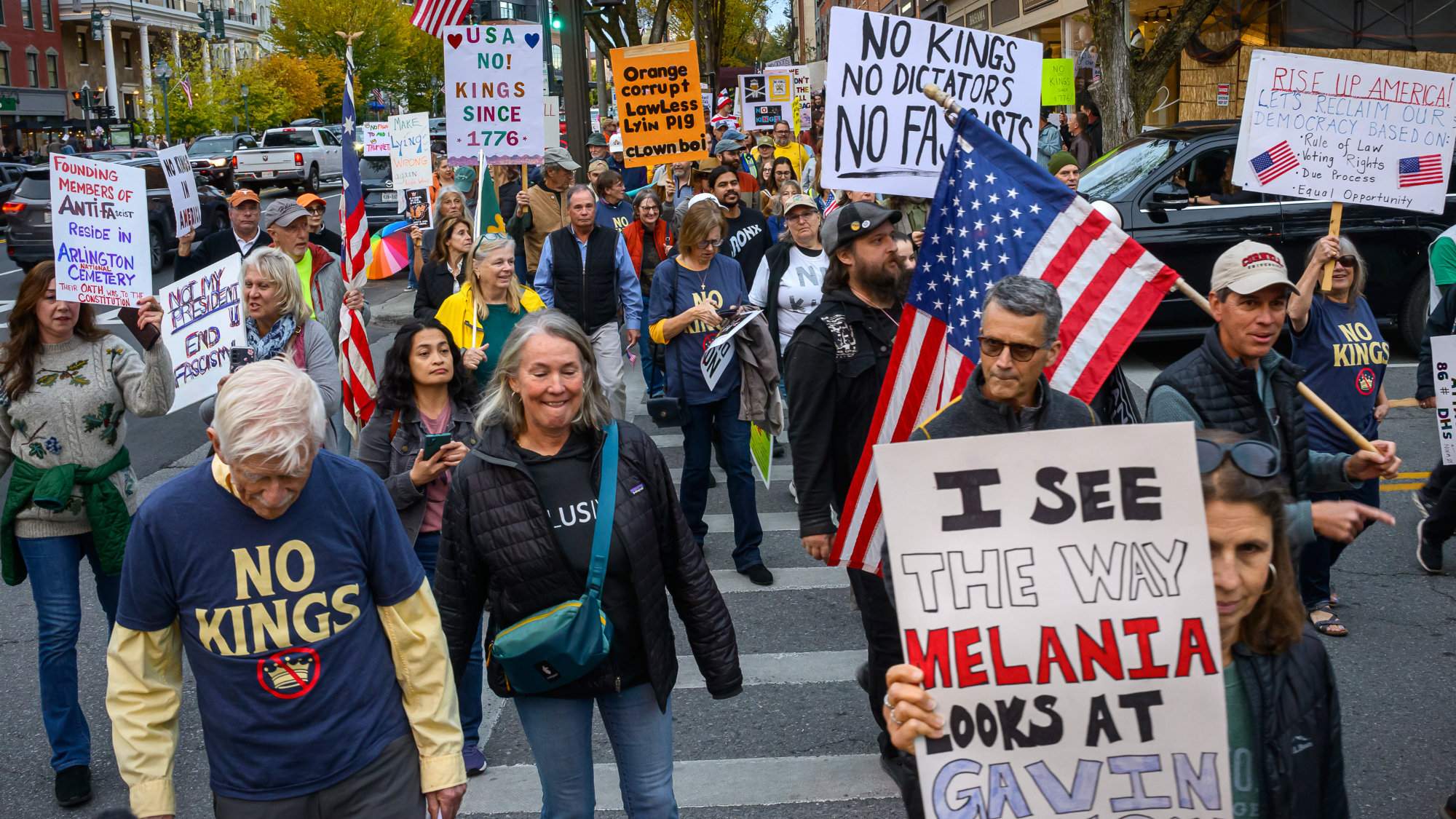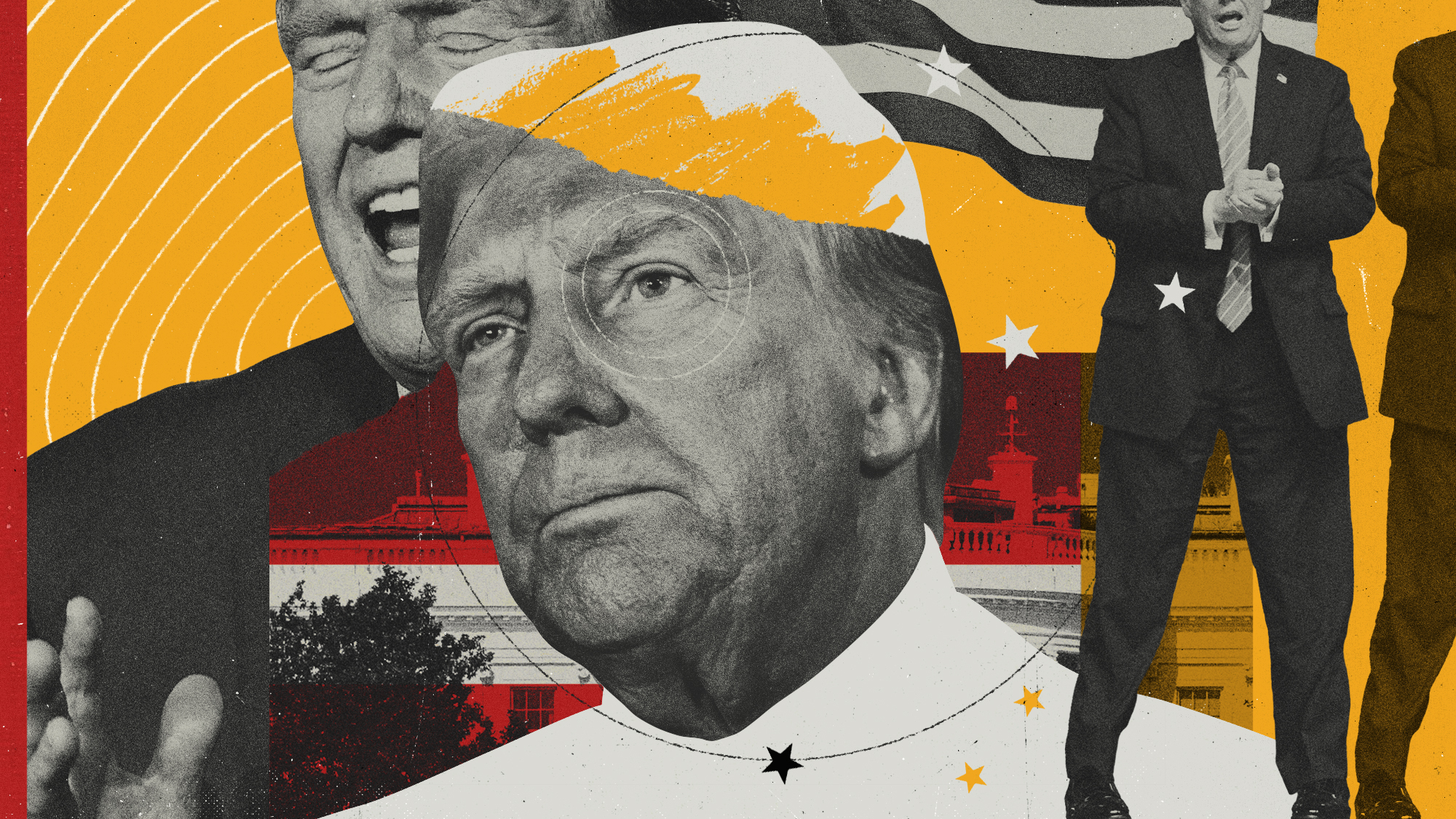The pension time bomb
State governments have promised public employees trillions in retirement benefits. Only problem: The money to pay them doesn’t exist

Why are pensions a problem?
For decades, local and state governments have guaranteed employees that they can retire on comfortable—and in some cases, lavish—pensions. Officials assumed that taxes, investments, and other revenues would rise over time, covering the cost. That assumption has turned out to be wrong. Taxpayers are now on the hook to provide pensions to 80 percent of the nation’s 27 million state and local government workers and retirees. The combined shortfall in funding those pensions could be as much as $3.4 trillion—more than double this year’s federal deficit. Even using a rosy projection that pension-investment portfolios will return 8 percent annually, seven states, including Illinois, Connecticut, and Louisiana, are on track to exhaust their pension funds within a decade. More than half of state pension funds will run dry by 2027. “This charade can’t last,” wrote former Los Angeles Mayor Richard Riordan and investment advisor Alexander Rubalcava in The New York Times. “In many cities, pension obligations will soon consume a quarter or more of the annual budget—money that will be unavailable for parks, libraries, street maintenance, and public safety.”
How did governments miscalculate so badly?
The Week
Escape your echo chamber. Get the facts behind the news, plus analysis from multiple perspectives.

Sign up for The Week's Free Newsletters
From our morning news briefing to a weekly Good News Newsletter, get the best of The Week delivered directly to your inbox.
From our morning news briefing to a weekly Good News Newsletter, get the best of The Week delivered directly to your inbox.
Pension funds subsist on three revenue streams: employee contributions, employer contributions, and investment earnings. During the 1990s, soaring stock prices swelled the value of pension funds, enabling states and municipalities to reduce their own contributions and those from employees. They also acceded to public union demands to increase benefits. “Everybody was raising benefits without thinking of the long term,” said Kil Huh, director of research for the Pew Center on the States. Governments began assuming they could count on rising markets and high investment returns indefinitely. But in the wake of the 2008 financial crisis, stock prices plummeted, eventually declining 56 percent from their 2007 peak; pension portfolios were devastated. The loss in equity was exacerbated by the plunge in tax revenues that also accompanied the Great Recession.
How generous are benefits?
They vary dramatically. The average annual benefit in 2008 was $22,780, according to the Center for Retirement Research at Boston College, a figure that includes part-time workers. But some public employees receive benefits far beyond average. More than 9,000 beneficiaries of CalPERS, California’s state retirement plan, which is the nation’s largest, receive six-figure annual pensions. In Yonkers, N.Y., taxpayers were outraged to learn that some police officers who had retired in their 40s were collecting six-figure pensions for life; former cop Hugo Tassone, for example, retired at 44 with a $101,333 pension. Edward A. Stolzenberg, a former public hospital administrator in New York’s Westchester County, receives $222,143 annually. “It may not be viable,” Stolzenberg acknowledged. “But that’s the way the state structured it.”
What about the cost of current workers?
A free daily email with the biggest news stories of the day – and the best features from TheWeek.com
It’s also part of the problem. While median family income actually declined over the past decade, salaries for public workers continued to rise. Blue-collar public workers with a high school education now earn, on average, more than their private-sector counterparts—$53,880 annually compared with $50,596. White-collar public-sector employees, however, fare less well. Those with professional degrees earn an average of $121,192 in the public sector, compared with $192,977 in the private sector. But with state budgets under duress and unemployment stuck at around 9.6 percent, public workers’ salaries and benefits are now coming under increased scrutiny. Taxpayer groups in California, which has a projected $19 billion budget deficit, want to cut salaries and take an ax to the most generous public pensions. But most state constitutions explicitly guarantee benefits that have accrued from work already completed. Even when municipalities have declared bankruptcy, their employee pension benefits have been paid.
Can benefits be scaled back?
Only for future employees. New Jersey Gov. Chris Christie recently signed legislation reducing pension benefits for new state employees. In California this month, voters in nine municipalities approved ballot measures to limit benefits for future public employees. And governments are starting to take a harder line in collective bargaining with public unions. “I’ve seen a sea change in the local collective bargaining process,” said Dwight Stenbakken, deputy executive director of the League of California Cities. Some analysts recommend following the lead of Georgia, which requires that prior to being enacted, any changes to retiree benefits be studied for long-term impacts. According to the Pew Center on the States, the policy has helped Georgia avoid “costly and irreversible” mistakes.
What if reform efforts fail?
Look out. If states run out of pension reserves, they’ll be forced to dip into operating budgets to pay benefits—siphoning money from schools, health care, and other vital services. Because most states are required to balance their budgets, tax increases or cuts to government services are the only options. In every region of the country, the high-rolling days are gone and the public-pension bill is coming due. “This is not a conservative-versus-liberal issue,” said Dan Liljenquist, a Utah state senator and pension-reform advocate, “this is a reality issue.”
Pay to play
With vast sums dedicated to public pensions, the potential for corruption is ever-present. In New York last week, prosecutors said they were on the verge of obtaining another guilty plea in the state’s “pay to play” scandal, just four weeks after former state Comptroller Alan Hevesi pleaded guilty to corruption. According to court documents, Hank Morris, Hevesi’s longtime political consultant, and other Hevesi aides steered billions in public-pension funds to investment firms that paid Morris for serving as the intermediary. Morris received some $15 million in fees. Investment firms that declined to pay were restricted from the “play”—the collection of fees for managing the pension fund’s investments. Because Hevesi was the sole trustee of the state’s $125 billion public-pension system, it was particularly ripe for abuse. The scandal, said New York Attorney General Andrew Cuomo, represented “the worst of the private-sector financial community meeting the worst of the state government.”
-
 6 lovely barn homes
6 lovely barn homesFeature Featuring a New Jersey homestead on 63 acres and California property with a silo watchtower
-
 Film reviews: ‘Marty Supreme’ and ‘Is This Thing On?’
Film reviews: ‘Marty Supreme’ and ‘Is This Thing On?’Feature A born grifter chases his table tennis dreams and a dad turns to stand-up to fight off heartbreak
-
 Political cartoons for December 14
Political cartoons for December 14Cartoons Sunday's political cartoons include a new White House flag, Venezuela negotiations, and more
-
 Has Zohran Mamdani shown the Democrats how to win again?
Has Zohran Mamdani shown the Democrats how to win again?Today’s Big Question New York City mayoral election touted as victory for left-wing populists but moderate centrist wins elsewhere present more complex path for Democratic Party
-
 Millions turn out for anti-Trump ‘No Kings’ rallies
Millions turn out for anti-Trump ‘No Kings’ ralliesSpeed Read An estimated 7 million people participated, 2 million more than at the first ‘No Kings’ protest in June
-
 Ghislaine Maxwell: angling for a Trump pardon
Ghislaine Maxwell: angling for a Trump pardonTalking Point Convicted sex trafficker's testimony could shed new light on president's links to Jeffrey Epstein
-
 The last words and final moments of 40 presidents
The last words and final moments of 40 presidentsThe Explainer Some are eloquent quotes worthy of the holders of the highest office in the nation, and others... aren't
-
 The JFK files: the truth at last?
The JFK files: the truth at last?In The Spotlight More than 64,000 previously classified documents relating the 1963 assassination of John F. Kennedy have been released by the Trump administration
-
 'Seriously, not literally': how should the world take Donald Trump?
'Seriously, not literally': how should the world take Donald Trump?Today's big question White House rhetoric and reality look likely to become increasingly blurred
-
 Will Trump's 'madman' strategy pay off?
Will Trump's 'madman' strategy pay off?Today's Big Question Incoming US president likes to seem unpredictable but, this time round, world leaders could be wise to his playbook
-
 Democrats vs. Republicans: who are US billionaires backing?
Democrats vs. Republicans: who are US billionaires backing?The Explainer Younger tech titans join 'boys' club throwing money and support' behind President Trump, while older plutocrats quietly rebuke new administration